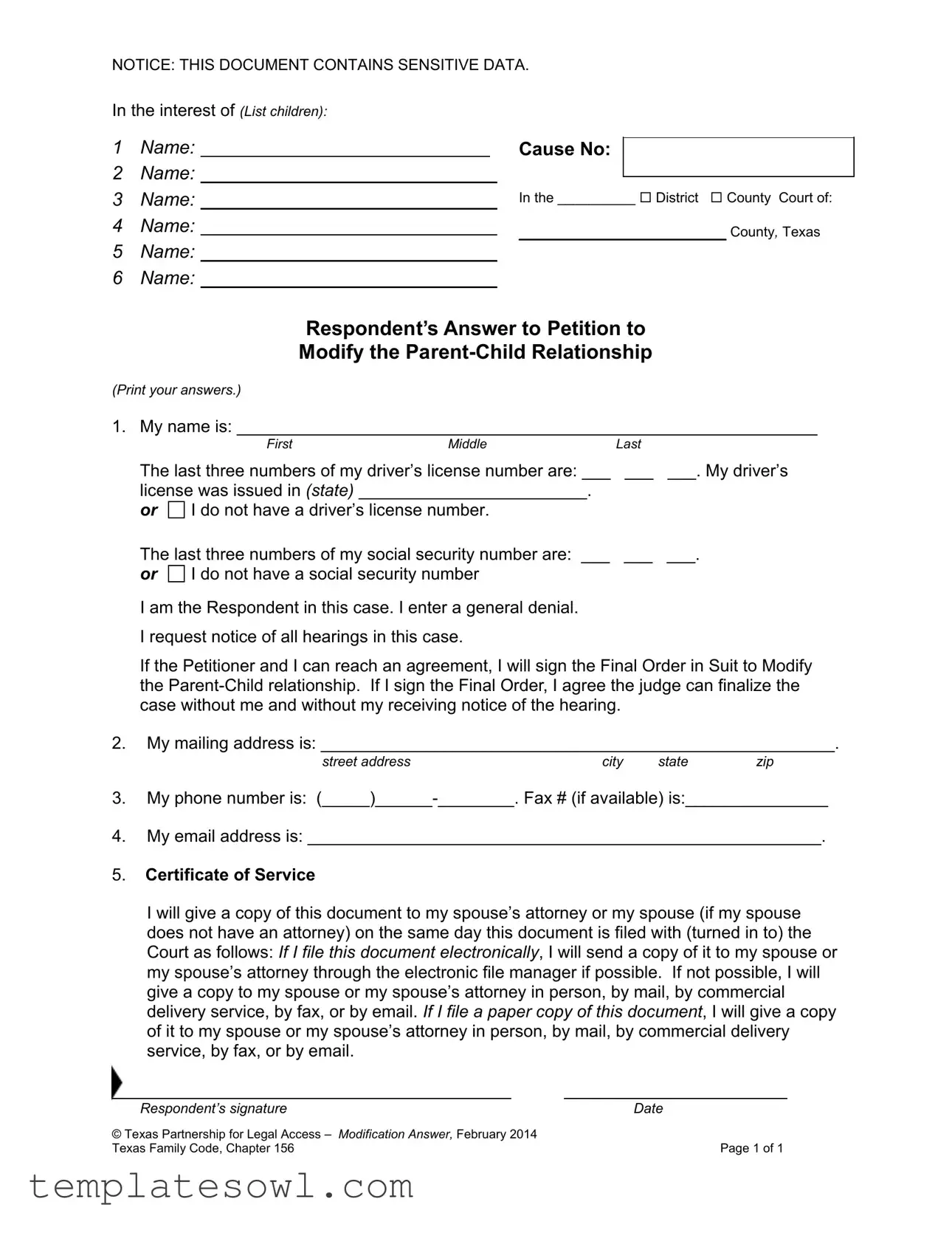NOTICE: THIS DOCUMENT CONTAINS SENSITIVE DATA.
In the interest of (List children):
1 |
Name: |
|
|
Cause No: |
|
2 |
Name: |
|
|
|
|
|
|
In the __________ District County Court of: |
3 |
Name: |
|
|
4 |
Name: |
|
|
____________________ County, Texas |
|
|
|
|
5Name:
6 Name:
Respondent’s Answer to Petition to
Modify the Parent-Child Relationship
(Print your answers.)
1. My name is: _____________________________________________________________
|
First |
Middle |
Last |
|
The last three numbers of my driver’s license number are: ___ |
___ |
___. My driver’s |
license was issued in (state) ________________________. |
|
|
OR |
I do not have a driver’s license number. |
|
|
The last three numbers of my social security number are: ___ |
___ |
___. |
OR |
I do not have a social security number |
|
|
I am the Respondent in this case. I enter a general denial.
I request notice of all hearings in this case.
If the Petitioner and I can reach an agreement, I will sign the Final Order in Suit to Modify the Parent-Child relationship. If I sign the Final Order, I agree the judge can finalize the case without me and without my receiving notice of the hearing.
2.My mailing address is: ______________________________________________________.
street address |
city |
state |
zip |
3.My phone number is: (_____)______-________. Fax # (if available) is:_______________
4.My email address is: ______________________________________________________.
5.Certificate of Service
I will give a copy of this document to my spouse’s attorney or my spouse (if my spouse does not have an attorney) on the same day this document is filed with (turned in to) the Court as follows: If I file this document electronically, I will send a copy of it to my spouse or my spouse’s attorney through the electronic file manager if possible. If not possible, I will give a copy to my spouse or my spouse’s attorney in person, by mail, by commercial delivery service, by fax, or by email. If I file a paper copy of this document, I will give a copy of it to my spouse or my spouse’s attorney in person, by mail, by commercial delivery service, by fax, or by email.
Respondent’s signature |
Date |
© Texas Partnership for Legal Access – Modification Answer, February 2014 |
|
Texas Family Code, Chapter 156 |
Page 1 of 1 |

